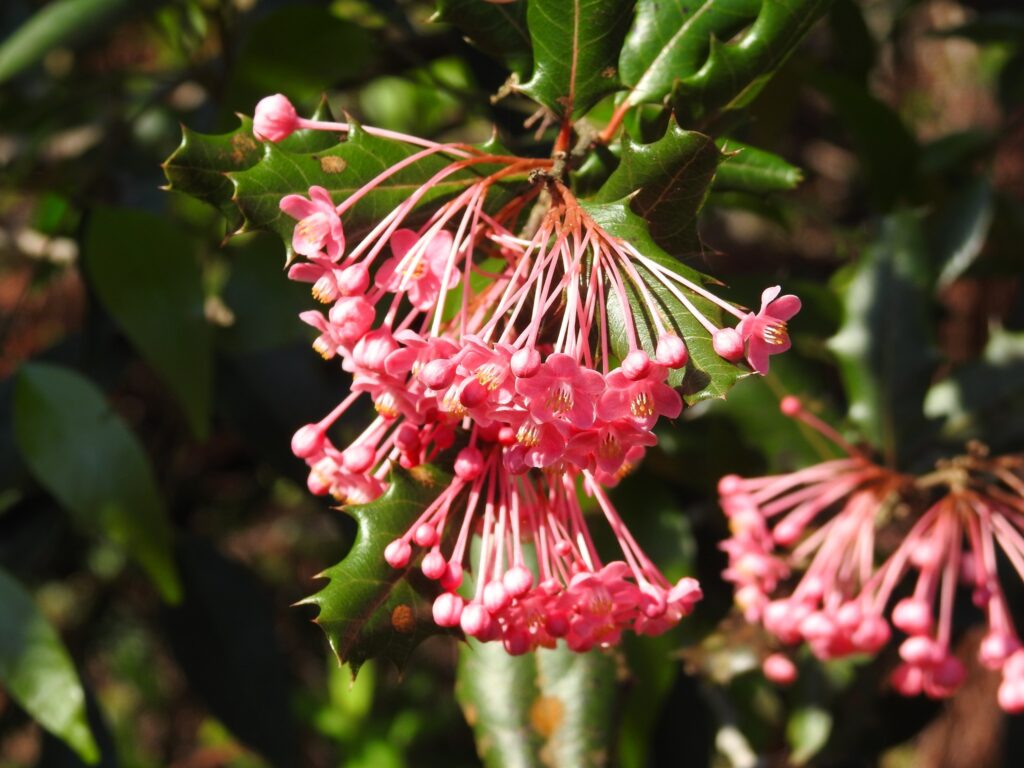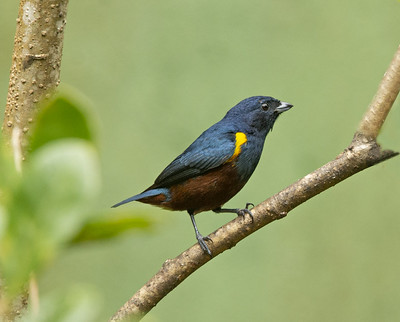
Hidden within the lush green canopies of tropical forests, the Casearia plant stands as a testament to resilience and ecological significance. With its intricate foliage and medicinal properties, Casearia has captivated the attention of botanists, conservationists, and nature enthusiasts alike. Yet, behind its verdant facade lies a tale of challenge and conservation efforts to protect its diverse species.
Casearia, belonging to the family Salicaceae, encompasses over 150 species spread across tropical regions, particularly in South America, Africa, and Asia. These plants, often termed “false elder” due to their resemblance to elder trees, play multifaceted roles in their ecosystems.
© amantedarmanin, some rights reserved
The Battle Against Extinction
In recent years, concerns have arisen regarding the endangerment and even extinction of certain Casearia varieties. Human encroachment, deforestation, and unsustainable harvesting practices have threatened the delicate balance that sustains these plants. Some species, once abundant in their native habitats, have become increasingly rare, if not extinct.
The Casearia integerrima, native to Brazil, is one such example. Its populations have dwindled due to habitat loss, pushing it perilously close to extinction. Similarly, Casearia sylvestris, prized for its medicinal properties, faces pressure from overharvesting, further exacerbating its vulnerable status.
Conservation Initiatives: A Glimmer of Hope
Amidst these challenges, conservation initiatives have emerged to safeguard the future of Casearia species. Organizations such as the International Union for Conservation of Nature (IUCN) and local botanical gardens have spearheaded efforts to protect and propagate endangered varieties.
In Brazil, the Brazilian Biodiversity Fund (Funbio) has partnered with indigenous communities to establish protected areas and promote sustainable harvesting practices. These initiatives not only conserve Casearia populations but also empower local communities to become stewards of their natural heritage.

© Reinaldo Aguilar, some rights reserved
Ecological Significance: A Haven for Wildlife
Beyond its intrinsic value, Casearia plays a crucial role in maintaining ecosystem health and supporting biodiversity. Its dense foliage provides shelter and nesting sites for various birds and small mammals, contributing to the intricate web of life within tropical forests. Furthermore, Casearia’s leaves serve as a vital food source for caterpillars and other herbivores, sustaining diverse insect populations essential for ecosystem functioning.

Avian Abodes:
Within the dense foliage of Casearia, a plethora of bird species find sanctuary. From colorful parrots to melodious songbirds, these avian inhabitants rely on the plant’s branches for nesting and roosting. Species such as the Chestnut-bellied Euphonia and the White-eyed Parakeet seek refuge amidst the leaves, their vibrant plumage blending seamlessly with the verdant canopy. The presence of Casearia not only provides shelter but also facilitates breeding, contributing to the vitality of avian communities in tropical forests.
© Patty McGann, Some rights reserved
Mammalian Refuge:
Beneath the towering Casearia trees, a diverse array of mammals find respite from the bustling forest floor. Arboreal creatures like the Three-toed Sloth and the Red-handed Howler Monkey navigate the treetops, utilizing Casearia branches as highways to traverse their forest domain. Meanwhile, ground-dwelling species such as the Agouti and the Collared Peccary forage for fallen fruits and seeds, their presence fostering a symbiotic relationship with Casearia through seed dispersal.
Insect Oasis:
At a closer glance, the intricate leaves of Casearia reveal a bustling microcosm of insect life. Caterpillars of butterflies and moths delicately nibble on the tender foliage, their voracious appetites fueling their transformation into winged wonders. Meanwhile, a myriad of beetles and ants scurry amidst the branches, engaging in vital ecological roles such as decomposition and nutrient cycling. The presence of Casearia sustains this vibrant insect community, supporting the intricate web of interactions that underpins tropical ecosystems.
Medicinal Marvels: Healing Traditions and Modern Science
Apart from its ecological significance, Casearia boasts a rich pharmacological profile, making it a cornerstone of traditional medicine in many cultures. Extracts from its leaves and bark have been used for centuries to treat a myriad of ailments, including fever, inflammation, and digestive disorders. The plant’s medicinal properties have garnered attention from researchers worldwide, spurring investigations into its potential therapeutic applications.
Global Healing Traditions:
Across continents, indigenous cultures have long revered Casearia for its medicinal properties. In countries such as Brazil, India, and Nigeria, traditional healers incorporate extracts from the plant into remedies for a diverse range of ailments. From fevers and infections to gastrointestinal disorders and skin conditions, Casearia is hailed as a versatile panacea, passed down through generations as a testament to its healing prowess.
Traditional Extraction Methods:
In Brazil, practitioners of traditional medicine often employ decoctions and infusions made from Casearia leaves and bark. These extracts, rich in bioactive compounds such as triterpenoids and flavonoids, are prepared through time-honored methods passed down through centuries of healing traditions. Whether consumed orally or applied topically, these remedies harness the therapeutic potential of Casearia to alleviate suffering and restore balance to the body.
Modern Pharmacological Investigations:
In recent years, scientific interest in Casearia has surged, prompting rigorous investigations into its pharmacological properties. Researchers have conducted studies to elucidate the mechanisms of action behind its traditional uses and identify novel bioactive compounds with therapeutic potential. Extracts from Casearia have shown promising antimicrobial, anti-inflammatory, and antioxidant properties, paving the way for the development of new pharmaceuticals to combat infectious diseases and chronic ailments.
Looking to the Future
As we navigate an era marked by environmental challenges and biodiversity loss, the fate of Casearia serves as a poignant reminder of our interconnectedness with the natural world. By championing conservation efforts and promoting sustainable practices, we can ensure that future generations continue to marvel at the beauty and benefits of this enigmatic plant.
In the intricate tapestry of life, every species, including Casearia, plays a vital role. Through collective action and reverence for nature’s wonders, we can preserve not only the diversity of life but also the invaluable services ecosystems provide. The story of Casearia is a call to action—a call to protect, conserve, and celebrate the extraordinary biodiversity that sustains our planet.
Bridging Tradition and Innovation
As traditional knowledge intersects with modern science, the potential of Casearia as a source of healing continues to unfold. By preserving indigenous wisdom and fostering interdisciplinary collaborations, we can harness the full spectrum of benefits that this remarkable plant offers. From supporting biodiversity to nurturing human health, Casearia stands as a testament to the intricate connections between nature, culture, and well-being. As we navigate the complexities of a rapidly changing world, let us draw inspiration from the timeless wisdom of plants like Casearia, forging a path towards a healthier, more sustainable future for all.
